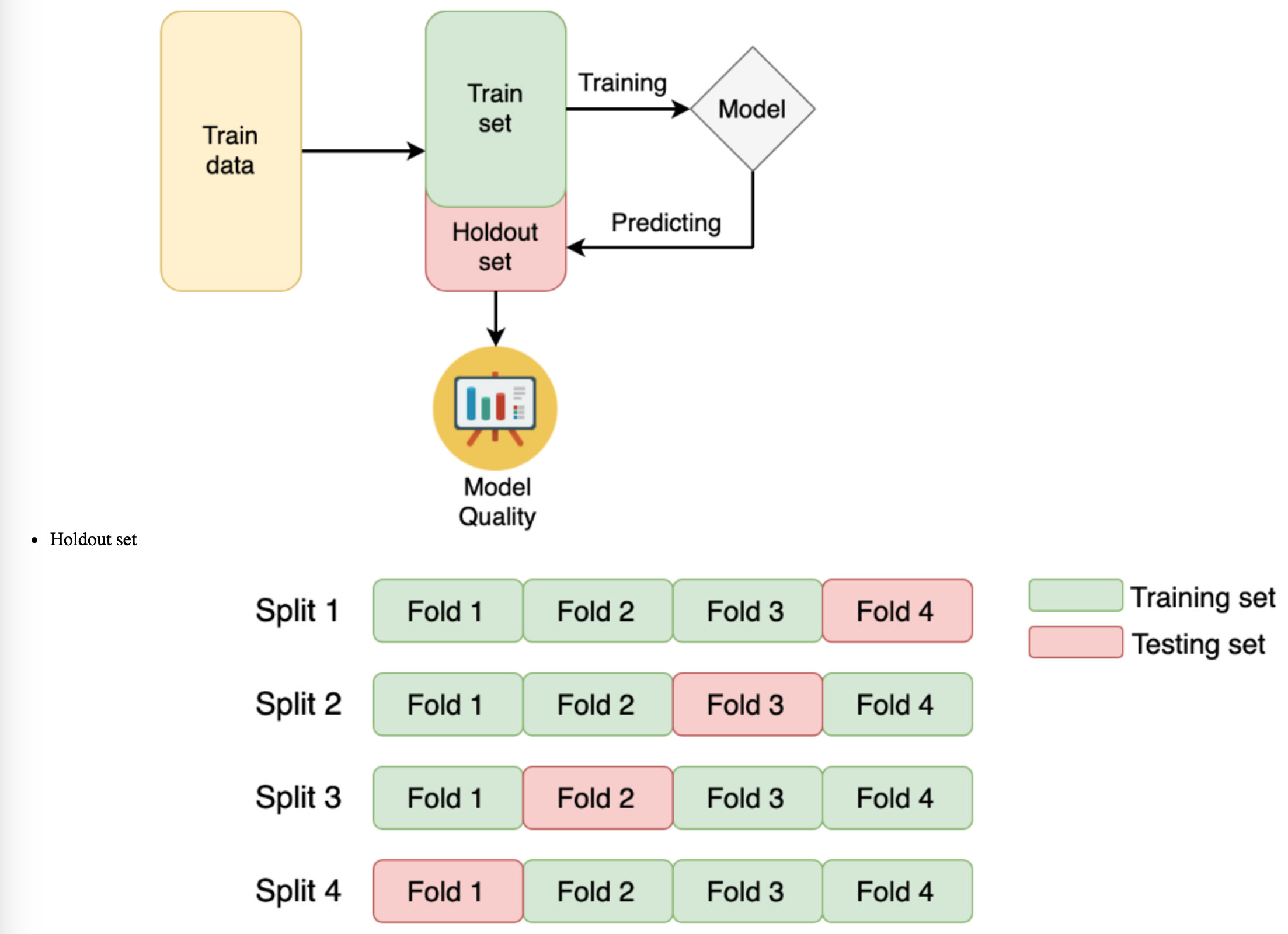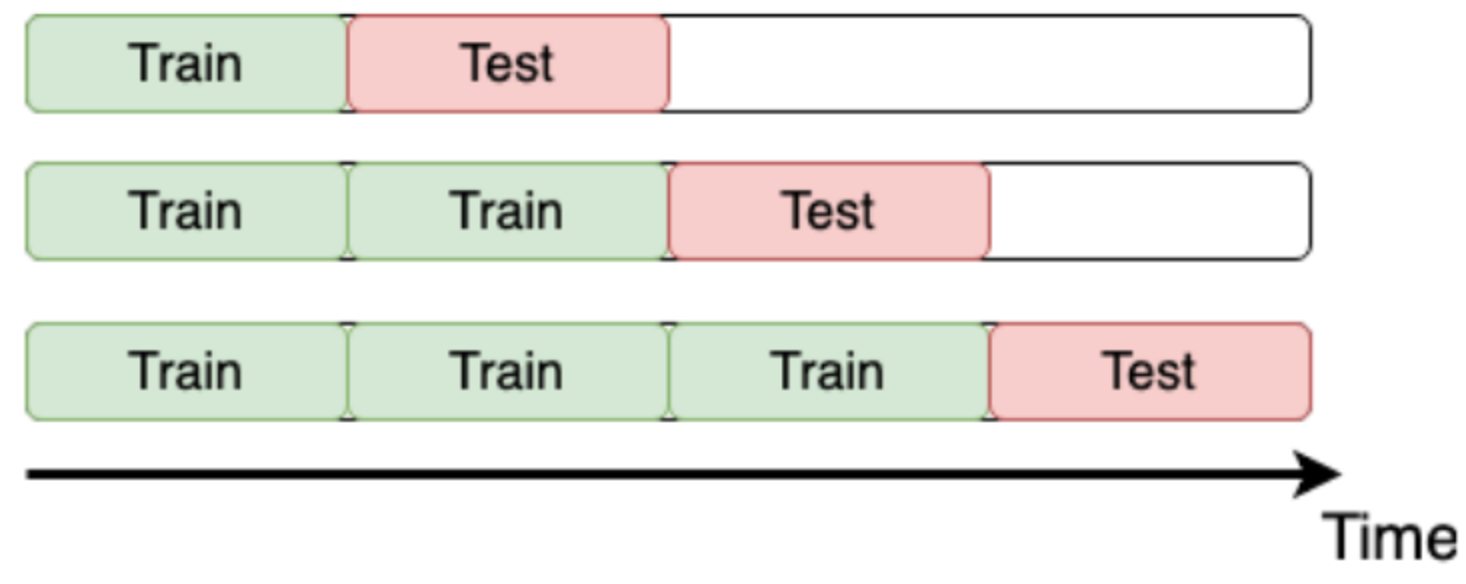Code
import pandas as pd
import numpy as np
import matplotlib.pyplot as plt
plt.style.use('ggplot')
plt.rcParams['figure.figsize']=(10, 8)kakamana
April 14, 2023
As part of PySpark, cutting-edge machine learning routines are included, as well as utilities that can be used to create full machine learning pipelines. In this chapter, you will learn more about them.
This Dive into the Competition is part of Datacamp course: Winning a Kaggle Competition in Python As you become familiar with the basics of Kaggle competitions, you will begin to study the specific problem at hand. During this course, you will be able to practice EDA and establish correct local validation strategies. The topic of data leakage will also be discussed.
This is my learning experience of data science through DataCamp. These repository contributions are part of my learning journey through my graduate program masters of applied data sciences (MADS) at University Of Michigan, DeepLearning.AI, Coursera & DataCamp. You can find my similar articles & more stories at my medium & LinkedIn profile. I am available at kaggle & github blogs & github repos. Thank you for your motivation, support & valuable feedback.
These include projects, coursework & notebook which I learned through my data science journey. They are created for reproducible & future reference purpose only. All source code, slides or screenshot are intellactual property of respective content authors. If you find these contents beneficial, kindly consider learning subscription from DeepLearning.AI Subscription, Coursera, DataCamp

Competition metric is used by Kaggle to evaluate your submissions. Moreover, you also need to measure the performance of different models on a local validation set.
For now, your goal is to manually develop a couple of competition metrics in case if they are not available in sklearn.metrics.
In particular, you will define:
Mean Squared Error (MSE) for the regression problem: \[ MSE = \frac{1}{N} \sum_{i=1}^{N}(y_i - \hat{y_i})^2 \]
Logarithmic Loss (LogLoss) for the binary classification problem: \[ LogLoss = -\frac{1}{N} \sum_{i = 1}^N (y_i \ln p_i + (1 - y_i) \ln (1 - p_i)) \]
# Import MSE from sklearn
from sklearn.metrics import mean_squared_error
# Define your own MSE function
def own_mse(y_true, y_pred):
# Raise differences to the power of 2
squares = np.power(y_true - y_pred, 2)
# Find mean over all observations
err = np.mean(squares)
return err
print('Sklearn MSE: {:.5f}. '.format(mean_squared_error(y_regression_true, y_regression_pred)))
print('Your MSE: {:.5f}. '.format(own_mse(y_regression_true, y_regression_pred)))Sklearn MSE: 0.15418.
Your MSE: 0.15418. sample_class = pd.read_csv('dataset/sample_class_true_pred.csv')
y_classification_true, y_classification_pred = sample_class['true'].to_numpy(), sample_class['pred'].to_numpy()
from sklearn.metrics import log_loss
# Define your own LogLoss function
def own_logloss(y_true, prob_pred):
# Find loss for each observation
terms = y_true * np.log(prob_pred) + (1 - y_true) * np.log(1 - prob_pred)
# Find mean over all observations
err = np.mean(terms)
return -err
print('Sklearn LogLoss: {:.5f}'.format(log_loss(y_classification_true, y_classification_pred)))
print('Your LogLoss: {:.5f}'.format(own_logloss(y_classification_true, y_classification_pred)))Sklearn LogLoss: 1.10801
Your LogLoss: 1.10801As mentioned in the slides, you’ll work with New York City taxi fare prediction data. You’ll start with finding some basic statistics about the data. Then you’ll move forward to plot some dependencies and generate hypotheses on them.
Train shape: (20000, 8)
Test shape: (9914, 7)
id fare_amount pickup_datetime pickup_longitude \
0 0 4.5 2009-06-15 17:26:21 UTC -73.844311
1 1 16.9 2010-01-05 16:52:16 UTC -74.016048
2 2 5.7 2011-08-18 00:35:00 UTC -73.982738
3 3 7.7 2012-04-21 04:30:42 UTC -73.987130
4 4 5.3 2010-03-09 07:51:00 UTC -73.968095
pickup_latitude dropoff_longitude dropoff_latitude passenger_count
0 40.721319 -73.841610 40.712278 1
1 40.711303 -73.979268 40.782004 1
2 40.761270 -73.991242 40.750562 2
3 40.733143 -73.991567 40.758092 1
4 40.768008 -73.956655 40.783762 1 count 20000.000000
mean 11.303321
std 9.541637
min -3.000000
25% 6.000000
50% 8.500000
75% 12.500000
max 180.000000
Name: fare_amount, dtype: float64
1 13999
2 2912
5 1327
3 860
4 420
6 407
0 75
Name: passenger_count, dtype: int64After generating a couple of basic statistics, it’s time to come up with and validate some ideas about the data dependencies. Again, the train DataFrame from the taxi competition is already available in your workspace.
To begin with, let’s make a scatterplot plotting the relationship between the fare amount and the distance of the ride. Intuitively, the longer the ride, the higher its price.
def haversine_distance(train):
data = [train]
lat1, long1, lat2, long2 = 'pickup_latitude', 'pickup_longitude', 'dropoff_latitude', 'dropoff_longitude'
for i in data:
R = 6371 #radius of earth in kilometers
#R = 3959 #radius of earth in miles
phi1 = np.radians(i[lat1])
phi2 = np.radians(i[lat2])
delta_phi = np.radians(i[lat2]-i[lat1])
delta_lambda = np.radians(i[long2]-i[long1])
#a = sin²((φB - φA)/2) + cos φA . cos φB . sin²((λB - λA)/2)
a = np.sin(delta_phi / 2.0) ** 2 + np.cos(phi1) * np.cos(phi2) * np.sin(delta_lambda / 2.0) ** 2
#c = 2 * atan2( √a, √(1−a) )
c = 2 * np.arctan2(np.sqrt(a), np.sqrt(1-a))
#d = R*c
d = (R * c) #in kilometers
return d# Calculate the ride distance
train['distance_km'] = haversine_distance(train)
# Draw a scatterplot
plt.scatter(x=train['fare_amount'], y=train['distance_km'], alpha=0.5);
plt.xlabel('Fare amount')
plt.ylabel('Distance, km')
plt.title('Fare amount based on the distance')
# Limit on the distance
plt.ylim(0, 50)
plt.show()
Another idea that comes to mind is that the price of a ride could change during the day.
Your goal is to plot the median fare amount for each hour of the day as a simple line plot.
train['pickup_datetime'] = pd.to_datetime(train.pickup_datetime)
train['hour'] = train.pickup_datetime.dt.hour
# Find median fare_amount for each hour
hour_price = train.groupby('hour', as_index=False)['fare_amount'].median()
# Plot the line plot
plt.plot(hour_price['hour'], hour_price['fare_amount'], marker='o');
plt.xlabel('Hour of the day');
plt.ylabel('Median fare amount');
plt.title('Fare amount based on day time');
plt.xticks(range(24));


You will start by getting hands-on experience in the most commonly used K-fold cross-validation.
The data you’ll be working with is from the “Two sigma connect: rental listing inquiries” Kaggle competition. The competition problem is a multi-class classification of the rental listings into 3 classes: low interest, medium interest and high interest. For faster performance, you will work with a subsample consisting of 1,000 observations.
You need to implement a K-fold validation strategy and look at the sizes of each fold obtained
train = pd.read_csv('./dataset/twosigma_rental_train.csv')
from sklearn.model_selection import KFold
# Create a KFold object
kf = KFold(n_splits=3, shuffle=True, random_state=123)
# Loop through each split
fold = 0
for train_index, test_index in kf.split(train):
# Obtain training and test folds
cv_train, cv_test = train.iloc[train_index], train.iloc[test_index]
print("Fold: {}".format(fold))
print("CV train shape: {}".format(cv_train.shape))
print("Medium interest listings in CV train: {}\n".format(
sum(cv_train.interest_level == 'medium')
))
fold += 1Fold: 0
CV train shape: (666, 9)
Medium interest listings in CV train: 175
Fold: 1
CV train shape: (667, 9)
Medium interest listings in CV train: 165
Fold: 2
CV train shape: (667, 9)
Medium interest listings in CV train: 162
As you’ve just noticed, you have a pretty different target variable distribution among the folds due to the random splits. It’s not crucial for this particular competition, but could be an issue for the classification competitions with the highly imbalanced target variable.
To overcome this, let’s implement the stratified K-fold strategy with the stratification on the target variable.
from sklearn.model_selection import StratifiedKFold
# Create a StratifiedKFold object
str_kf = StratifiedKFold(n_splits=3, shuffle=True, random_state=123)
# Loop through each split
fold = 0
for train_index, test_index in str_kf.split(train, train['interest_level']):
# Obtain training and test folds
cv_train, cv_test = train.iloc[train_index], train.iloc[test_index]
print('Fold: {}'.format(fold))
print('CV train shape: {}'.format(cv_train.shape))
print('Medium interest listings in CV train: {}\n'.format(
sum(cv_train.interest_level == 'medium')
))
fold += 1Fold: 0
CV train shape: (666, 9)
Medium interest listings in CV train: 167
Fold: 1
CV train shape: (667, 9)
Medium interest listings in CV train: 167
Fold: 2
CV train shape: (667, 9)
Medium interest listings in CV train: 168

Remember the “Store Item Demand Forecasting Challenge” where you are given store-item sales data, and have to predict future sales?
It’s a competition with time series data. So, time K-fold cross-validation should be applied. Your goal is to create this cross-validation strategy and make sure that it works as expected.
train = pd.read_csv('dataset/demand_forecasting_train_1_month.csv')
from sklearn.model_selection import TimeSeriesSplit
# Create TimeSeriesSplit object
time_kfold = TimeSeriesSplit(n_splits=3)
# sort train data by date
train = train.sort_values('date')
# Iterate through each split
fold = 0
for train_index, test_index in time_kfold.split(train):
cv_train, cv_test = train.iloc[train_index], train.iloc[test_index]
print('Fold :', fold)
print('Train date range: from {} to {}'.format(cv_train.date.min(), cv_train.date.max()))
print('Test date range: from {} to {}\n'.format(cv_test.date.min(), cv_test.date.max()))
fold += 1Fold : 0
Train date range: from 2017-12-01 to 2017-12-08
Test date range: from 2017-12-08 to 2017-12-16
Fold : 1
Train date range: from 2017-12-01 to 2017-12-16
Test date range: from 2017-12-16 to 2017-12-24
Fold : 2
Train date range: from 2017-12-01 to 2017-12-24
Test date range: from 2017-12-24 to 2017-12-31
Now it’s time to get the actual model performance using cross-validation! How does our store item demand prediction model perform?
Your task is to take the Mean Squared Error (MSE) for each fold separately, and then combine these results into a single number.
For simplicity, you’re given get_fold_mse() function that for each cross-validation split fits a Random Forest model and returns a list of MSE scores by fold. get_fold_mse() accepts two arguments: train and TimeSeriesSplit object.
from sklearn.ensemble import RandomForestRegressor
def get_fold_mse(train, kf):
mse_scores = []
for train_index, test_index in kf.split(train):
fold_train, fold_test = train.loc[train_index], train.loc[test_index]
# Fit the data and make predictions
# Create a Random Forest object
rf = RandomForestRegressor(n_estimators=10, random_state=123)
# Train a model
rf.fit(X=fold_train[['store', 'item']], y=fold_train['sales'])
# Get predictions for the test set
pred = rf.predict(fold_test[['store', 'item']])
fold_score = round(mean_squared_error(fold_test['sales'], pred), 5)
mse_scores.append(fold_score)
return mse_scoreskf = TimeSeriesSplit(n_splits=3)
# Get MSE scores for each cross-validation split
mse_scores = get_fold_mse(train, kf)
print('Mean validation MSE: {:.5f}'.format(np.mean(mse_scores)))
print('MSE by fold: {}'.format(mse_scores))
print('Overall Validation MSE: {:.5f}'.format(np.mean(mse_scores) + np.std(mse_scores)))Mean validation MSE: 955.49186
MSE by fold: [890.30336, 961.65797, 1014.51424]
Overall Validation MSE: 1006.38784